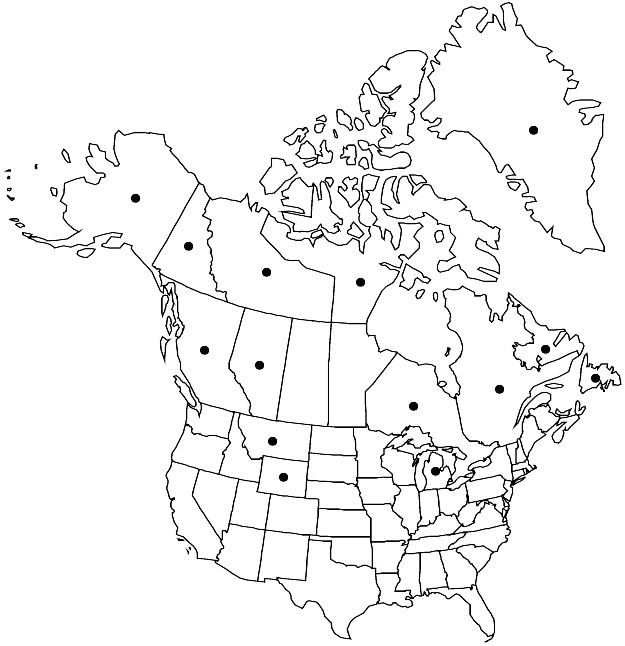Difference between revisions of "Brachythecium turgidum"
Vidensk. Meddel. Naturhist. Foren. Kjøbenhavn, ser. 4, 9: 294. 1888.
FNA>Volume Importer |
imported>Volume Importer |
||
| Line 50: | Line 50: | ||
|publication year=1888 | |publication year=1888 | ||
|special status= | |special status= | ||
| − | |source xml=https:// | + | |source xml=https://bibilujan@bitbucket.org/aafc-mbb/fna-data-curation.git/src/bb6b7e3a7de7d3b7888a1ad48c7fd8f5c722d8d6/coarse_grained_fna_xml/V28/V28_664.xml |
|genus=Brachythecium | |genus=Brachythecium | ||
|species=Brachythecium turgidum | |species=Brachythecium turgidum | ||
Revision as of 22:47, 27 May 2020
Plants large, rigid, in moderately dense mats, green to often rich golden and brownish yellow. Stems to 12 cm, creeping to ascending or erect in dense growth, terete-foliate, irregularly pinnate, branches to 15 mm, straight to flexuose, terete-foliate. Stem leaves erect-appressed, closely imbricate, ovate-lanceolate, broadest at 1/8–1/4 leaf length, slightly concave, strongly plicate, 2.5–3.5 × 0.9–1.3 mm; base tapered, decurrent; margins plane or often recurved at places, entire to slightly serrulate, especially distally; apex gradually or abruptly tapered, acumen often long and filiform; costa to 60–75% leaf length, moderately strong, terminal spine absent; alar cells subquadrate to short-rectangular, small, 12–20 × 11–15 µm, walls thick, region indistinctly delimited, of 5–10 × 5–8 cells; laminal cells linear, 45–100(–130) × 6–9(–11) µm, walls thick, of similar width as lumina; basal cells 8–13 µm wide, walls thick, porose, region in 3 rows. Branch leaves similar, smaller. Sexual condition autoicous. Seta reddish, 1–2 cm, smooth. Capsule horizontal, red-brown to dark brown, elongate, curved, 2 mm; annulus separating by fragments; operculum long-conic. Spores 13–17 µm.
Habitat: Soil, rock, exposed mesic to wet habitats
Elevation: low to moderate elevations (0-1300 m)
Distribution

Greenland, Alta., B.C., Nfld. and Labr., N.W.T., Nunavut, Ont., Que., Yukon, Alaska, Mich., Mont., Wyo., n Eurasia.
Discussion
Brachythecium turgidum is an Arctic-alpine species obviously with a higher elevation limit than 1300 m, but many labels lack elevation information. The species can usually be recognized as robust plants with upright growth, strongly plicate leaves, subentire leaf margins, thick-walled laminal cells, and thick-walled and porose basal cells. This species rarely produces sporophytes, and if they are present, the seta is quite short. In wet places in the Arctic, especially near late and permanent snow beds, this species develops shoots with very concave, weakly plicate leaves that are also abruptly acuminate, and the plants look similar to B. cirrosum.
Selected References
None.